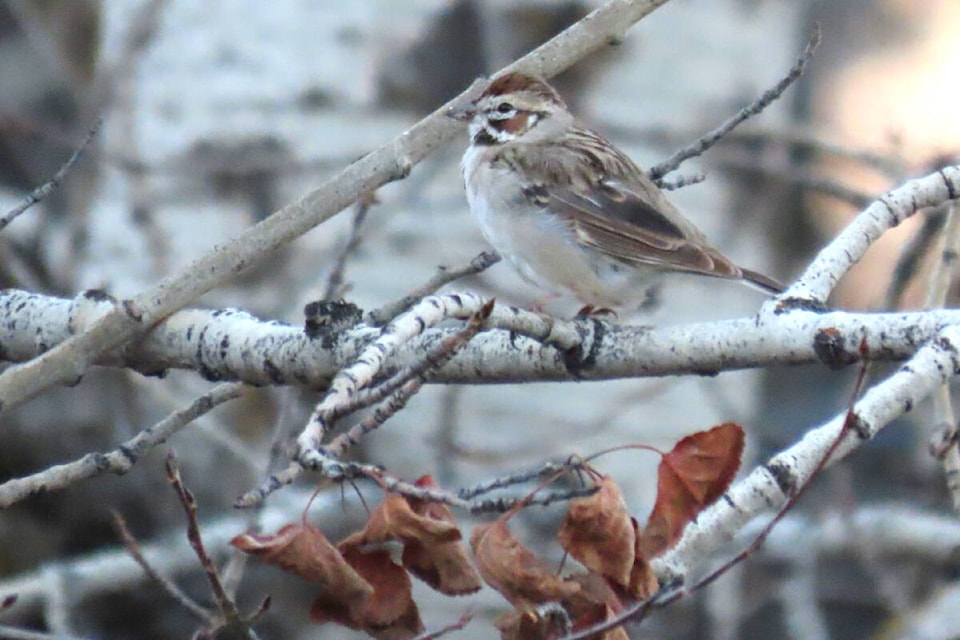Phil RANSON
Special to The Tribune
The Williams Lake Field Naturalists hosted their 54th annual Christmas bird count on Sunday, Dec. 19.
The weather was mainly sunny with temperatures between -13C and -16C with mostly light winds.
As is often the case, most of the open water had frozen over in the preceding days which limited the few ducks remaining to small patches of open water in the river and the sewage lagoons.
A heavy snowfall the previous day had the effect of bringing some birds down into the valley where bird feeders were doing a brisk trade, but also limiting access for birders on many of the non-maintained back roads.
Despite the less than favourable conditions, there was a good turnout of birders with 39 counters in the field and another 16 reporting from their bird feeders.
One of these feeders on Opal Street provided the highlight of the day with a first-ever for the count, Lark Sparrow.
Not only an unusual bird in this area but also only the third winter record for the province. These birds generally winter in Mexico and the south-western United States.
Once again, Bohemian Waxwings made a significant impact on the count providing over half the total number of birds seen on the day.
The final tally was 9,081 birds of 54 species with waxwings contributing a count high of nearly 4,900. These dapper birds appear fairly briefly at this time of the year often arriving from the north in vast flocks.
Feeding primarily on mountain ash and juniper berries, they quickly depart just as soon as their food source is depleted.
Rock Pigeons and House Sparrows were the only other species that appeared on the count in record numbers.
These introduced species rely heavily on bird feeders as well as spilled grain to get through the winter and have spread from mainly in-town habitats to out into the suburbs. Another bird appearing in almost record numbers was the Townsend’s Solitaire.
This species competes with the waxwings for juniper berries and is often overwhelmed.
The record was set in 2013 when the 85 Solitaires counted was also a Canadian Christmas count high.
The total this year fell two short but it will be interesting to see if it was once again the highest number in Canada.
On the other end of the scale, birds that don’t seem to be doing as well continue to be the Hairy Woodpeckers with only 12 counted.
The record high was 50 in 2006 and numbers have been gradually declining since.
Many people with bird feeders have remarked on the scarcity of Black-capped Chickadees this year which was borne out by the 210 on the count.
This is the lowest total in 20 years.
Absent this year were both the Red Crossbill and the White-winged Crossbill for the third straight year.
These cone-feeding finches are an irruptive species appearing either in large numbers some years if there is a good cone crop, to completely absent in others.
Many thanks to the counters in the field, particularly those who travelled from out of town, and those who reported in the numbers from their bird feeders.
